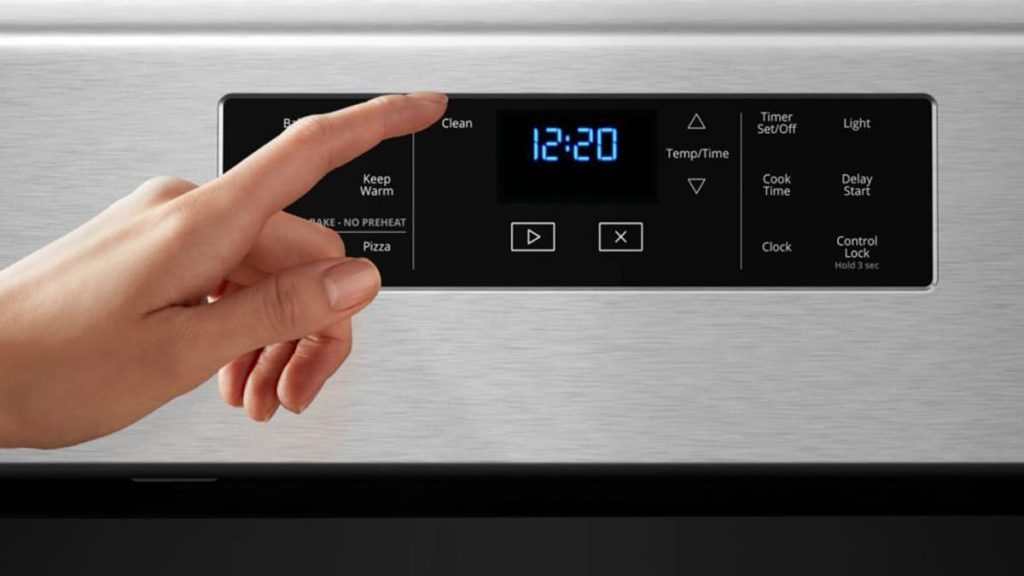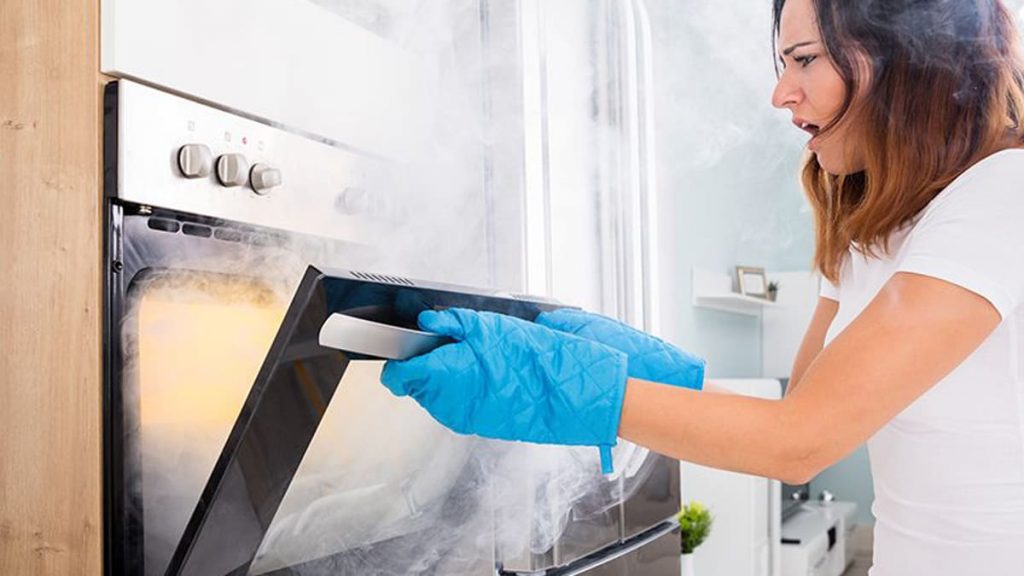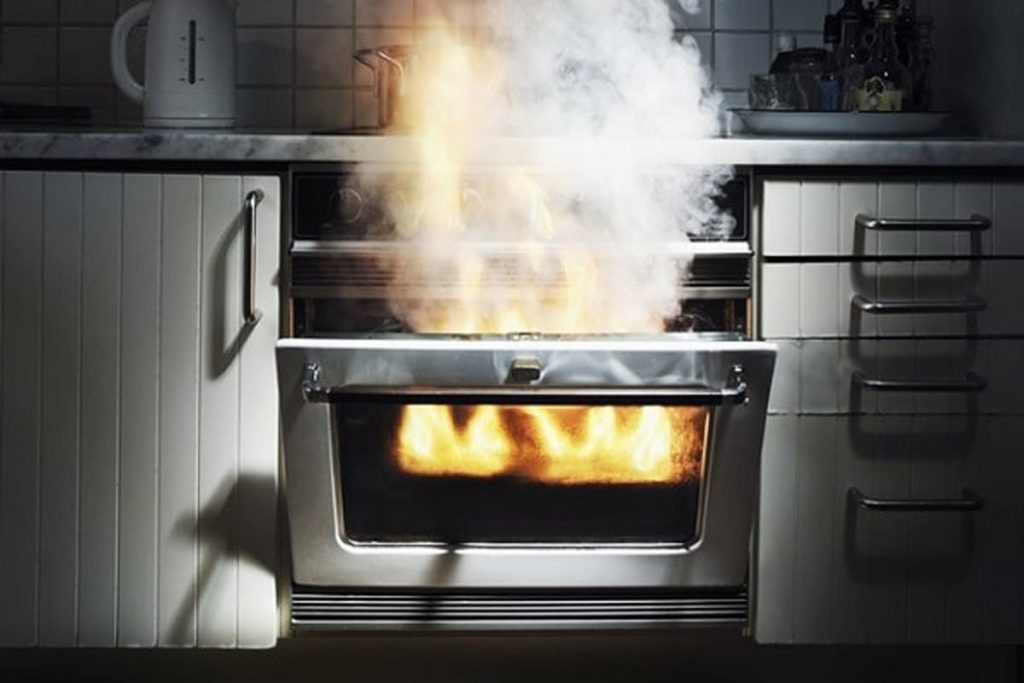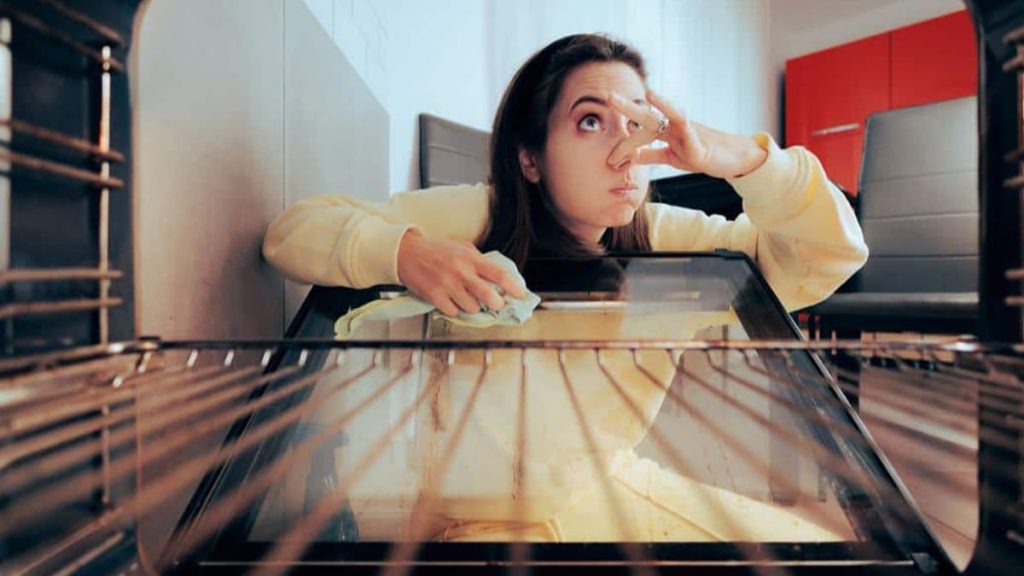Manufacturers of modern household appliances care about the comfort of users thanks to a variety of functions. An oven equipped with self-cleaning allows you not only to save time, but also to be sure of the quality of the operation carried out by the device. However, not everyone is close to the oven, because the procedure takes a lot of time. Therefore, in some cases, the owner decides to start the cycle before going to bed. Is it possible to do this, and what it can lead to, will be described in detail below.
How the self-cleaning function works
It is no secret that it is impossible to clean the oven at night without supervision. If a person went to bed, then he may face big problems. This is due to the specifics of the operation of the device and the processes that occur during the cleaning of the oven.
The specified function is a program executed as a loop. When the user turns on the appropriate mode, the oven begins to warm up to extreme temperatures – over 900°F (almost 500°C). Such heat removes any remaining fat and pieces of food, even in hard-to-reach places. At the end of the processing of the chamber, it remains only to remove the ashes. To do this, just use a napkin. Unfortunately, the heat treatment of the oven can go according to a different scenario. In order to prevent emergencies, you need to be aware of the existing risks.
How long does it take for the oven to clean the cavity?
Self-cleaning is a long procedure, from the beginning to the end of which takes at least 3 hours. This is because camera processing is a complex process consisting of several stages. Extreme temperatures are preceded by preparation, and the technique will take more time to complete the cycle. As a result, self-cleaning can take about five hours.
If the oven does not finish the cycle in the same time as other users, do not worry. Each model has its own size and maximum chamber processing temperature. Therefore, this fact does not indicate the presence of a malfunction. By the way, in the instructions for the oven, the operation time should also be indicated.
What are the risks of self-cleaning the oven?
As a rule, the main danger of the technique is due to strong heating. This process, in turn, provokes others, which are recommended to be monitored in order to avoid the situation getting out of control. The following are some of the factors that pose a particular danger to humans.
Vapors, smoke
This is one of the first reasons why the oven should not be left during sleep. When food remains are burned, smoke and carbon dioxide will be released from the device. The more dirt in the chamber, the more intense the evaporation will be. If a person is asleep, he will not be able to control the process, and an excess of carbon monoxide leads to poisoning and even death. If a person is at home and awake, then it will not be a problem for him to ventilate the room by opening the window or increasing the speed of the hood.
Possible injuries to animals and children
The high temperature caused by the processes in the oven goes outside the appliance. Because of this, there is a strong heating of the outer panels and the door window. If children or pets touch the appliance, they may get burned. The parent should closely monitor both the oven and the child with pets.
Risk of ignition
The next factor that can lead to trouble is the likelihood of a fire. Ignition can occur both inside the appliance and outside it. Most often this is due to the interaction of the hot outer panels of the oven with combustible finishing elements located close to the device.
If a person is asleep, he will not be able to react to a fire in time. The fire spreads very quickly. Therefore, during the cycle, you need to approach the device from time to time, inspecting it and nearby objects.
Minor flashes in the camera are normal. However, the presence of a steady flame inside the oven already indicates a fire. If this happens, you should immediately turn off the equipment and take measures to localize the outbreak and extinguish it. In the event of a fire spreading to nearby objects, remember to call the emergency service.
In practice, oven fires are quite common. Therefore, the risk of ignition of the device must not be underestimated.
CO2 poisoning
Carbon monoxide is a huge danger to human and animal life. If smoke forms during the combustion of food residues in the oven, then a colorless chemical compound that has no smell comes out with it. The presence of the user near the instrument during the cycle is mandatory. As soon as the room begins to fill with smoke, urgent measures must be taken to ensure maximum ventilation of the apartment.
Carbon monoxide cannot be felt or seen. However, a special detector will help protect yourself from excessive concentration. It works on finger (little) batteries or batteries of the “krone” type. Given the cost, sensors can be installed in all rooms and the corridor. So, in case of an unforeseen situation, the user will learn in time about the increased concentration of gas in the air.
Rules for the safe use of the self-cleaning program
The hazards listed above refer to the warning against leaving the appliance unattended. By itself, the cleaning function of the device is useful and you should not be afraid to use it. Firstly, this is how hard-to-reach and hidden internal cavities of the oven are disinfected, and secondly, high-quality cleaning without the use of chemicals.
To use the program correctly, it is enough to follow a few recommendations. Among them:
- Do not leave the house or sleep while the oven is in operation.
- To reduce the risk of fire, wipe the chamber with a tissue before starting the cycle.
- The oven must be tightly locked. On new models, the door locks automatically, while on older models, the user will have to perform the action manually.
- Good ventilation must be maintained during the entire self-cleaning process of the oven.
- When finished, bring the oven to cool completely. This is required to reduce the risk of burns. Typically, users are injured when opening the door or when trying to clean the inside of the oven.
Question-Answer (FAQ)
What does the oven do when the self-cleaning mode is on?
When the user starts such a program, the oven removes food and fat residues in the chamber at high temperatures. The cycle can last up to 5 hours. As a result, the dirt will turn into ashes and can be removed with a napkin.
Can the oven ignite during the cleaning process?
Yes, in some cases a fire may occur. This happens when strong heat is applied to the remaining fat. The latter, as you know, is combustible, and its excess provokes ignition. In addition, the risk of fire increases due to the heating of the outer panels of the device. If the user has placed the device near combustible material, then it may sooner or later flare up.
What happens if the grids are left in the chamber while the self-cleaning program is running?
This item is not designed to operate in extreme temperatures. If during the cycle the component is inside the oven, then it will deform. It is no longer possible to use such grids for their intended purpose.
Is it safe to be near the oven while it is self-cleaning?
Yes, moreover, the oven must be monitored periodically. If the user has any concerns, he will be able to quickly turn off the equipment by stopping the mode. The only recommendation that must be followed is the creation of sufficient ventilation of the premises. To do this, you will need to turn on the hood, slightly open the windows and do not lock the interior doors.
Is exposure to oven fumes harmful to humans?
Excess smoke will undoubtedly harm the user’s mucous membranes and respiratory system. To avoid poisoning or breathing problems, it is necessary to ventilate the room. It is important to properly prepare the equipment for cleaning the camera. To do this, manually remove food residues and grease inside the oven. Small particles in cavities or hard-to-reach areas will burn off during the cycle. As a result, the treatment process will no longer be accompanied by excessive emission of smoke and carbon monoxide.





